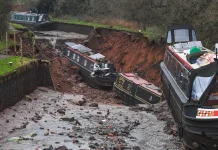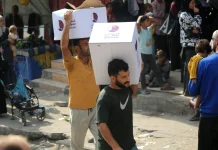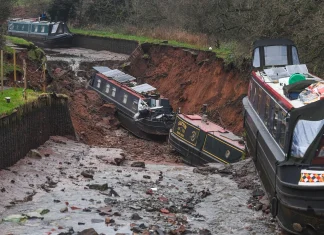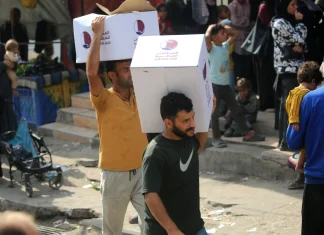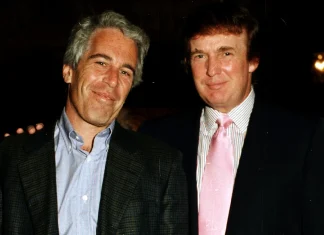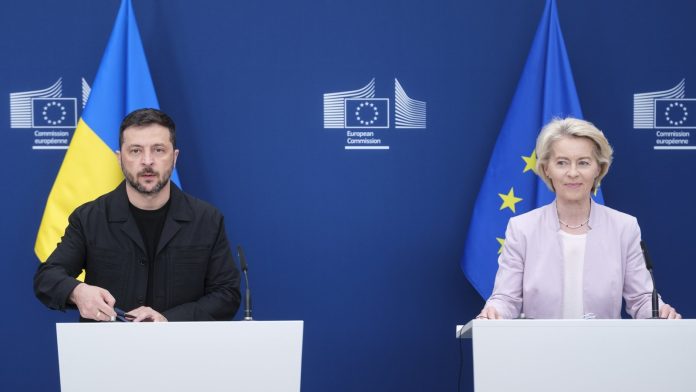
In the Eye of the Storm: A High-Stakes Chess Game Over Ukraine’s Future
The historic and heartrending conflict in Ukraine, which has claimed over a million lives and reshaped the geopolitical landscape of Europe, finds itself at an electrifying and precarious juncture. On a brisk April day in Washington, a rare confluence of leaders — Ukrainian President Volodymyr Zelensky, European heavyweights, and former U.S. President Donald Trump — gathered around the Oval Office, each carrying the heavy burden of history and hope. What unfolded was more than just a diplomatic meeting; it was a dramatic tableau about survival, sovereignty, and the rewriting of borders in the 21st century.
A Meeting Laden with Urgency and Ambiguity
President Zelensky arrived in Washington not as a visitor but as a beacon for his embattled nation, hoping to solidify international backing as U.S. politics take an unpredictable turn. With European leaders such as German Chancellor Friedrich Merz, French President Emmanuel Macron, British Prime Minister Keir Starmer, European Commission President Ursula von der Leyen, and others in tow, the stakes could not be higher. This gathering was an attempt to shield Zelensky from political crosswinds stirred by Donald Trump’s recent overtures towards Russia.
The backdrop was tense: just days before, Trump met Vladimir Putin in Alaska — a meeting charged with controversy and surprise. Trump emerged advocating for a peace deal, pressing Ukraine to negotiate swiftly to end Europe’s deadliest war in generations. His pivot towards Russia’s position — urging Ukraine to consider conceding its eastern Donbas region, which has been largely under Kremlin control — stunned many observers.
“If peace is not possible, thousands will continue to die,” warned Senator Marco Rubio in a candid conversation on CBS’ “Face the Nation.” Rubio’s words echoed with a somber practicality, underscoring the brutal calculus faced by negotiators: lives versus land, principles versus pragmatism.
The Promise and Peril of Security Guarantees
Perhaps the most significant and nuanced development from these talks revolves around proposed “security guarantees” for Ukraine. Russia’s envoy to international organizations in Vienna, Mikhail Ulyanov, publicly agreed that any peace deal should ensure Kyiv’s security — yet Moscow demands reciprocal assurances. This duality feeds into a larger question: Who protects the protector?
Steve Witkoff, Trump’s envoy, unveiled a startling proposal to CNN — the U.S. might offer Ukraine an Article 5-like defence pledge, echoing NATO’s collective defense clause. “It’s the first time we’ve heard Russia agree to something like this,” Witkoff noted, a fraught olive branch with strings attached.
But how reliable are such guarantees, given history? Ukraine gave up its nuclear arsenal in 1994, expecting protection that failed to prevent Crimea’s 2014 annexation and the 2022 full-scale invasion. This sobering fact injects skepticism into any promise, no matter how well-intentioned.
Voices from the Ground: The Human Face of Diplomacy
Amid polished speeches and power moves, the war’s human toll rings out brutally clear. In Kyiv’s cafés and rubble-strewn streets, Ukrainians watch global leaders debate their fate with anxiety and hope.
“We want peace, not paper promises,” said Olena, a schoolteacher whose family fled bombed-out neighborhoods. “Every day there is a risk — we need concrete action, not negotiations that drag on while we suffer.”
Meanwhile, in London, political analyst Dr. Nikhil Patel pointed out, “Europe’s involvement is a litmus test for multilateralism in crisis. The continent’s leaders know that stability on their doorstep is non-negotiable.”
Europe’s Balancing Act
Western Europe’s presence in Washington was a statement of solidarity and suffused with nuance. Leaders warned that peace could not come at the expense of Ukraine’s territorial integrity.
“No negotiations without Ukraine’s full consent,” emphasized Ursula von der Leyen, capturing the mood of many Europeans unwilling to see the country carved up without Kyiv’s consent. Yet, disagreements simmer under the surface: while the UK and France propose deploying reassurance forces post-ceasefire, countries like Germany and Italy remain cautious about military involvement.
The war has ignited varied reactions across the continent. Finnish President Alexander Stubb, famously sharing golf rounds with Trump, and Italian Prime Minister Giorgia Meloni — an admirer of Trump’s policies — brought complex dynamics into the room.
Negotiating Peace Without Ceasefire: Fantasy or Folly?
One of the most contentious ideas is pursuing peace talks before a ceasefire — a stance Trump and Putin reportedly embraced in Alaska. To many, including Poland’s Foreign Ministry, this idea is untenable. “You cannot negotiate peace under falling bombs,” their statement declared with moral clarity.
Indeed, with over one million casualties so far and millions displaced, the urgency is undeniable. Yet, what kind of peace can rise from the smoke and rubble without a pause in the violence? This paradox defines the current diplomatic efforts.
Power Plays and Political Posturing
The meeting also decoded layers of global strategy. Trump’s suggestion that Ukraine cede Donbas — a move Zelensky rejected outright — rekindled fears of realpolitik swallowing principles. “Russia is a very big power, and they’re not,” Trump commented candidly post-summit, insinuating that power dynamics should guide negotiations.
For Zelensky, standing firm while navigating unpredictable allies is a delicate dance. His social media updates reflected cautious optimism but unwavering resolve: “Borders must not be changed by force,” he declared, insisting security guarantees must cover land, air, and sea, with meaningful European involvement.
Reflecting on the Global Implications
What lessons does this high-stakes negotiation offer beyond Ukraine’s borders? It’s a vivid reminder that global conflicts today are deeply intertwined with history, national identity, and great-power politics. The war unearths uncomfortable truths about the limits of international guarantees and the human desperation lurking behind diplomatic facades.
How do we balance realpolitik with human rights? Can peace be brokered without justice? And as new powers assert themselves on the world stage, how will alliances evolve?
At its core, this story is not just about states and treaties — it’s about millions of lives hanging in the balance. As the negotiations move forward, one can’t help but ask: In a world craving stability, what price are we willing to pay for peace?
Conclusion: The Fragile Road Ahead
The Washington summit was a snapshot of a global drama in motion, brimming with hope and heartbreak, strategy and sincerity. European leaders rallying behind Zelensky signal that Ukraine will not be left alone, yet the shadow of Russia’s demands looms large. The concept of security guarantees offers fresh hope, but history warns against naïveté.
More than ever, this conflict forces a reckoning about international responsibility, the fragility of sovereignty, and the pursuit of peace amid persistent violence. As the world watches, the question remains: Can diplomacy untangle the complexities of war, or will it simply layer new uncertainties atop old grievances?
For those captivated by global affairs, the unfolding story in Washington is a call to reflect — on power, on humanity, and on the enduring quest for a just peace in an uncertain world.


